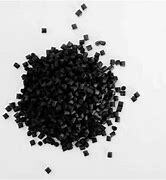Overview of Additive Manufacture Niobium Alloy 3D Printing C103 Powder
Niobium, often found in conjunction with tantalum minerals, is primarily extracted as a byproduct of tin and tantalum mining. Its chief ores include pyrochlore and columbite. Once refined, niobium becomes highly versatile, finding application in alloys, superconductors, and various high-tech materials.
Feature of Additive Manufacture Niobium Alloy 3D Printing C103 Powder
-
Superior Strength and Lightness: When added to steel in small quantities (typically less than 1%), niobium significantly enhances the strength and toughness of the alloy while reducing its weight, making it ideal for aerospace and automotive applications.
-
Corrosion Resistance: Like tantalum, niobium forms a passive oxide layer that protects it from corrosion, making niobium-based alloys suitable for use in harsh environments.
-
Superconductivity: Niobium exhibits excellent superconducting properties when cooled below its critical temperature of about 9.2 K (-264°C or -443°F). This property makes it the primary material for superconducting magnets used in MRI scanners and particle accelerators.
-
Magnetic Properties: Niobium is paramagnetic at room temperature but becomes strongly diamagnetic when cooled, meaning it repels magnetic fields. This characteristic is exploited in certain specialized applications.
-
Ease of Fabrication: Despite its strength, niobium is easily formed, welded, and machined, facilitating its use in complex engineering designs.

(Additive Manufacture Niobium Alloy 3D Printing C103 Powder)
Parameters of Additive Manufacture Niobium Alloy 3D Printing C103 Powder
The additive manufacturing process for niobium alloy 3D printing, also known as 3D printing with powder materials, involves using layers of metal powders to build up the final structure of a part.
One parameter that can affect the performance of an additive manufactured niobium alloy 3D printer is the “C103” powder used. C103 is a high-purityNiobium-based powder that has been widely used in the industry due to its good compatibility with other materials and its high melting point.
To determine the optimal C103 powder for your particular use case, you will need to consider several factors such as the type of powder bed, the printing speed, the resolution of the print, and the desired size and shape of the final part.
There are various suppliers and online resources available that provide detailed information on the properties of different types of C103 powder and their recommended usage scenarios. It’s important to carefully read and analyze this information to make an informed decision about the best choice for your specific application.

(Additive Manufacture Niobium Alloy 3D Printing C103 Powder)
Company Profile
Metal in China is a trusted global chemical material supplier & manufacturer with over 12-year-experience in providing super high-quality copper and relatives products.
The company has a professional technical department and Quality Supervision Department, a well-equipped laboratory, and equipped with advanced testing equipment and after-sales customer service center.
If you are looking for high-quality metal powder and relative products, please feel free to contact us or click on the needed products to send an inquiry.
Payment Methods
L/C, T/T, Western Union, Paypal, Credit Card etc.
Shipment
It could be shipped by sea, by air, or by reveal ASAP as soon as repayment receipt.
FAQ

(Additive Manufacture Niobium Alloy 3D Printing C103 Powder)





